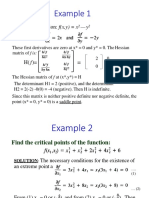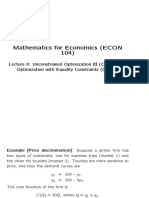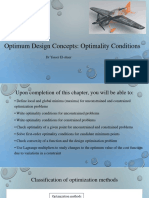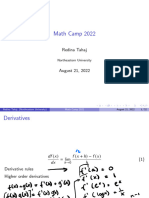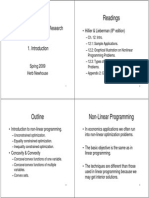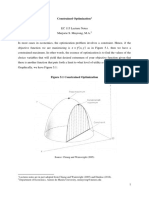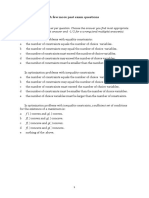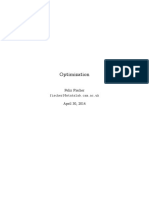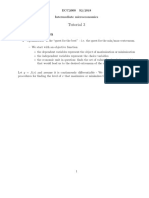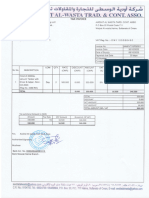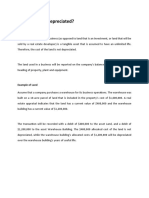0% found this document useful (0 votes)
13 views42 pagesConstrained Optimization
This document discusses constrained optimization, focusing on the impact of constraints on the optimal choices of variables in various contexts, such as firms and consumers. It introduces concepts like binding and non-binding constraints, the Lagrangean technique, and conditions for local and global optima. Additionally, it covers quasi-concavity, convex sets, and the envelope theorem for both unconstrained and constrained problems.
Uploaded by
knowledgeknot2021Copyright
© © All Rights Reserved
We take content rights seriously. If you suspect this is your content, claim it here.
Available Formats
Download as PPTX, PDF, TXT or read online on Scribd
0% found this document useful (0 votes)
13 views42 pagesConstrained Optimization
This document discusses constrained optimization, focusing on the impact of constraints on the optimal choices of variables in various contexts, such as firms and consumers. It introduces concepts like binding and non-binding constraints, the Lagrangean technique, and conditions for local and global optima. Additionally, it covers quasi-concavity, convex sets, and the envelope theorem for both unconstrained and constrained problems.
Uploaded by
knowledgeknot2021Copyright
© © All Rights Reserved
We take content rights seriously. If you suspect this is your content, claim it here.
Available Formats
Download as PPTX, PDF, TXT or read online on Scribd
/ 42





